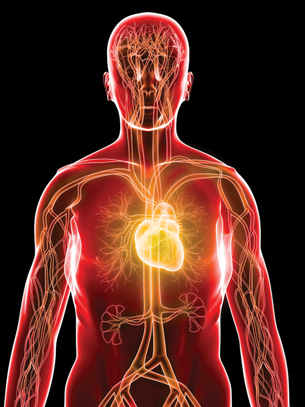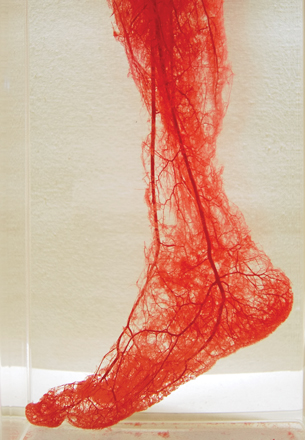Module 8 Intro
1. Module 8 Intro
1.7. Page 5
Module 8—Circulation, Immunity, and Excretion
 Read
Read
The Structure of Blood Vessels

© Sebastian Kaulitzki/shutterstock
Arteries carry oxygen-rich blood away from the heart, except for the pulmonary arteries. These arteries carry deoxygenated blood from the heart to the lungs. Veins carry oxygen-poor blood toward the heart, except for pulmonary veins. There are four pulmonary veins and they carry oxygen-rich blood from the lungs to the left atrium. Just remember, the pulmonary arteries and veins carry the opposite kind of blood to the rest of the arteries and veins in the body.
Blood travels from arteries to capilliaries. Capillaries are very thin and fragile. They are actually only one red blood cell thick and are the blood vessels that network throughout your entire body. The arteries deliver the oxygen-rich blood to the capillaries, where the actual exchange of oxygen and carbon dioxide occurs. The capillaries then deliver the waste-rich blood to the veins for transport back to the lungs and heart. Nutrients, gas, and other materials are transported into and out of the capilliaries, depending if they are necessary reactants or waste products of metabolism.

© TAOLMOR/shutterstock
Systemic circulation moves in the following cycle:
heart → arteries → body tissue capillaries → veins → heart
Continue learning about blood vessels by reading pages 270 and 271 of the textbook.
 Self-Check
Self-Check
SC 1. What blood vessels carry blood away from the heart?
SC 2. What blood vessels carry blood to the heart?
SC 3. Compare the structures of the three types of blood vessels.
 Self-Check Answers
Self-Check Answers
SC 1. Arteries carry blood away from the heart.
SC 2. Veins carry blood to the heart.
SC 3. Veins are not elastic and require valves to move blood back to the heart. Otherwise, blood would pool in the extremities. Arteries are elastic so they can expand with the force of blood as it pumps from the heart. Arteries expand as ventricles relax and keep the blood flowing. Capillaries are very small and spread out in a network that allows single blood cells to be exposed to individual cells.